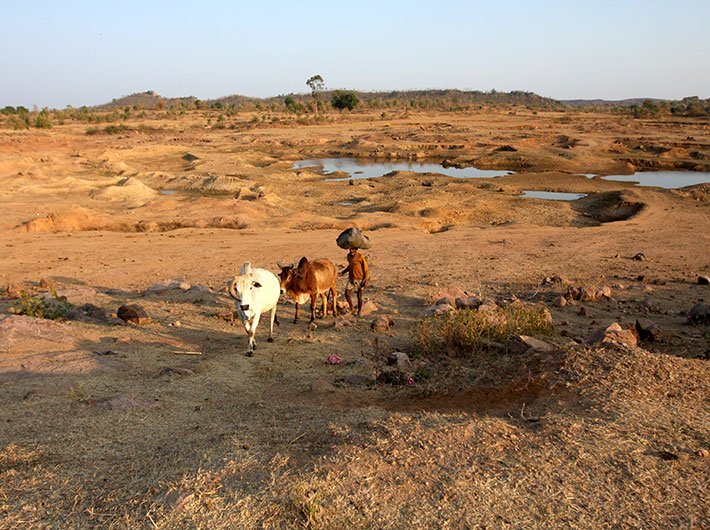The monsoon this year has brought cheer to farmers and a report by CRISIL, a research agency, said it expects “the favourable monsoon to revive rural incomes”.
“Larger agricultural output will help boost supply and rural incomes. It will also exert a downward pressure on prices and farm incomes. We estimate that on balance, even with a fall in food prices, the output effect will weigh in and raise agricultural GDP by Rs 1.49 trillion this fiscal. This is assuming an above-trend growth of 4 percent in agricultural output. In fiscal 2016, the increase in agricultural income was Rs 978 billion,” said CRISIL’s Monsoon Granular Review, October 2016.
Monsoon withdrawal commenced from west Rajasthan on September 15 with a delay of two weeks. It has withdrawn from most parts of northwest India as on October, 10, 2016.
The report said that rainfall in 2016 has been recorded as normal, at just 3 percent below the long-period average. What’s better is that for the first time in 3 years, rains were well-distributed – only 33 percent of the districts saw deficient rains, compared with 49 percent in 2015 and 46 percent in 2014. Moreover, more than half of these deficient districts are well-irrigated and the many that are not are agriculturally less relevant. To be sure, there is some stress is pockets – mainly in Gujarat and Karnataka, where a few districts are witnessing their second or third consecutive deficiency.
It added that the despondency of the past two monsoons has given way to sanguinity. After a slow start in June, rains caught up and, as on September 28, 2016, were just 3 percent short of the long-period average (LPA). This has boosted reservoir levels from the lows seen at the beginning of this fiscal, and done the confidence of farmers a world of good. To wit, the area coverage under all kharif crops is at 1,060 lakh hectare compared with 1,052 lakh hectare last year. Also, rural demand is starting to show green shoots and is likely to provide the much-needed fillip to rural consumption this fiscal.
“We expect GDP to grow 7.9 percent this fiscal, and agriculture to grow above trend at 4 percent, while CPI inflation would remain contained at 5 percent.”
There is some stress in pockets, particularly in Gujarat and Karnataka, which are the worst affected this year. “The share of these states in all-India kharif production is less than 7 percent and that of their distressed districts just 1.7 percent. From the state perspective, however, the stress to agricultural household incomes could be high as a quarter of the kharif production in Karnataka and about 33 percent in Gujarat comes from the distressed districts. Also, the kharif crop contributes about 66 percent of the total agriculture production in Karnataka and 55 percent in Gujarat.”
Sub-normal monsoons in the past two fiscals have taken a toll on agricultural production. As per the third advance estimates for 2015, rice output is down 2 percent, coarse cereals 12 percent, pulses 0.5 percent, sugarcane 4 percent and oilseeds 6 percent, exacerbating rural distress. Agriculture GDP growth averaged 0.4 percent in the past two fiscals, much below the long-term trend of 3 percent. A normal monsoon this time is therefore expected to turn the picture around.
“We expect GDP to grow at 7.9 percent in fiscal 2017, and agriculture at 4 percent. As rural private consumption revives, it will spur a rise in capacity utilisation and kickstart the investment cycle by the end of this fiscal. Sectors such as automobiles, particularly two-wheelers and consumer durables, are expected to gain,” the report said.
It went on to say that on the inflation front, “we expect ample kharif production to boost supply and bring down food inflation, especially for pulses where inflation has remained in double digits for 14 months on the trot now. On the other hand, recent data shows global food prices are skyrocketing. Where inflation settles will depend on the interplay of good monsoons, tending to lower domestic food inflation, and rising global prices exerting an upward pressure”.
Read the full CRISIL report
